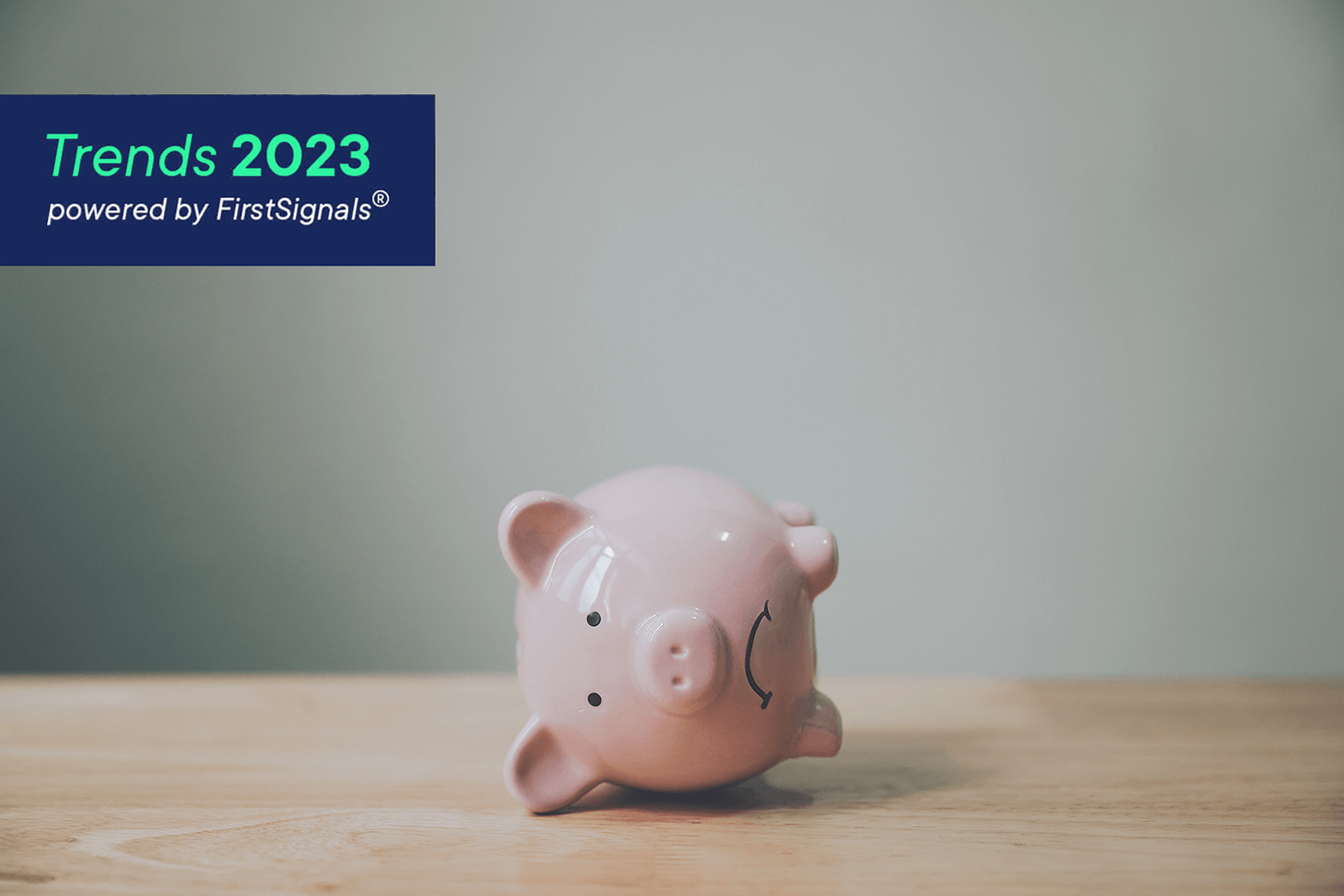After prices initially fell at the end of 2022, they have been rising again since January. Although financial experts expect inflation to flatten out over the course of the year, it will nonetheless remain at a high level. The results of our media monitoring in German-speaking countries also show that inflation is still relevant. With our FirstSignals® research method, we have determined which new buzzwords and trends are currently developing in this context. The most important trends are presented below:
GREEDFLATION
Greedflation describes the phenomenon that some companies are benefiting particularly from the ongoing inflation and are taking advantage of the current situation to increase their prices more than necessary. At least that is what economists and politicians accuse the public debate about. The question is, however, whether the companies’ higher profits are simply due to high market demand or whether they are because several monopolistic companies have not increased their prices simply to offset their increased production and distribution costs. “Greedflation” refers to an inflation that is mainly promoted by the “greed for profit” of companies.
SKIMPFLATION
If companies deliberately reduce the previous quality of their products and/or services, this is “skimpflation”. The name comes from “skimp” (English: “skimp”). As a result of increased costs for companies, services are performed less quickly, for example, or expensive product components are replaced by cheaper alternatives. Therefore, there are often longer waiting times or a reduced scope of services. Many companies originally shut down or paused their services due to the pandemic but are now keeping these adjustments in perpetuity.
SHRINKFLATION
Almost everyone has already experienced “shrinkflation” when shopping: The term describes the reduction of the packaging contents while the price remains the same or even higher – crisp bags are filled with more air, kitchen paper has fewer sheets, and the margarine has less content in the same packaging. This procedure is often difficult for end users to recognize and is not punishable by companies. This is not a new phenomenon, but as our media analysis shows, it is currently gaining in importance again.
DRIP PRICING
This approach is not entirely new either but is currently the subject of more intense discussion: the tactic used in this type of pricing consists of first attracting consumers with a basic offer and only disclosing other price components later in the purchasing process. Since the users have already started an active ordering process at this point and a new search would also mean a new effort, many consumers still accept the higher price. This strategy is particularly common, e.g., when selling plane tickets, holiday homes or at ATMs. Additional service fees are often incurred here that were not shown from the start. Since this pricing technique has become widespread in some industries.
GREAT CANCELLATION
High inflation is causing many people to reconsider how they handle money and make use of potential savings. Until recently, was it still possible to follow the trend towards subscription economy observe, this is now turning into waves of layoffs. Companies in particular that benefited from the lockdowns during the Corona period are now having to deal with severe setbacks again. This affects many streaming providers, for example, who are now increasingly looking for new sales channels.
Want to know more about inflation and other emerging issues relevant to you? Learn how to spot trends before others do with FirstSignals® here.



